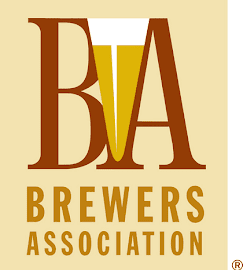Since 1981- the birth of our movement - craft brewers have proclaimed the freshness and flavor of their beers. But these days, more and more breweries appear to be trumpeting the higher alcohol levels of their beers.
Reflecting upon the repeal of Prohibition (see yesterday's post), I find this to be a potentially troubling thing.
American brewers in the 19th and early 20th centuries were certain that prohibition could never happen. If brewers of the 21st century are not wary, their alcoholic bleats may soon be attracting - if they haven't already - the attention of today's neo-prohibitionists.
Beer writer and Malt Advocate editor Lew Bryson has embarked upon a mission he calls the Session Beer Project. It's about the sensory beauty, balance, and alcoholic moderation of good beers of less than 5.5% alcohol by volume. It's session because one can make a session of these - have several - and yet remain compos mentis.
I'm also an advocate for balance in beers and the beauty often overlooked in smaller beers (and have been for awhile). Or as the NY Times Eric Asimov (nephew of the other Asimov), put it, supporting the supposition in the negative:
For the most part, extreme beers are the boring ones. Simply offering more – whether alcohol, hops, horsepower or volume – does not make something better.
I said this - in a whimsical manner - about the naming of these strong beers:
In 1776, nascent Americans rejected Empire and its Imperial trappings. So why are American brewers so enthusiastically re-embracing that concept when naming their quintessentially American beers (excluding the historically correct acknowledgment of Catherine the Great's penchant for extracurricular activities and London stout)?
- Imperial this, imperial that!!??
In my position as a brewer and, now, beer salesman, I have often been asked as to what is or was my favorite beer.
I have many!
But one which stands out, was a 3.4% English bitter, pulled from a cask at the 1999 US Real Ale Festival.
Most of the beers at the US-RAF that year were exemplars of the then new extreme beer movement: more hops, more alcohol. But Coniston Bluebird Bitter —which had won Supreme Champion Beer of Britain just the year before— was not.
Missing the alcohol and the very bitter/residual sweetness yin/yang of 'big beers', it seemed to burst with citric flavor and brewing alchemy. For me, it was, hands-down, the best beer that day. Its simultaneous simplicity and complexity were - and are - the quintessence of session beer: balance, beauty, and drinkability. If alcohol were synonymous with flavor, we would all be drinking Everclear.
Postscripts
- The US Real Ale Festival is no more, although organizer Ray Daniels now leads the Brewers Publications arm of the Brewers Association.
- The festival's cellarmaster - Steve Hamburg - coauthored a definitive article on brewing English bitters: Confessions of Two Bitter Men (Zymurgy, 1995).
- That year Bluebird was imported by B. United. At the festival I met Ron Fischer of B. United for the first time. He is someone who has done a lot for the availability and promotion of real ale/cask ale/good beer here in the US.
- Coniston Bluebird Bitter is a fine beer today but not the beer I tasted that day in 1999.












No comments:
Post a Comment
Comment here ...